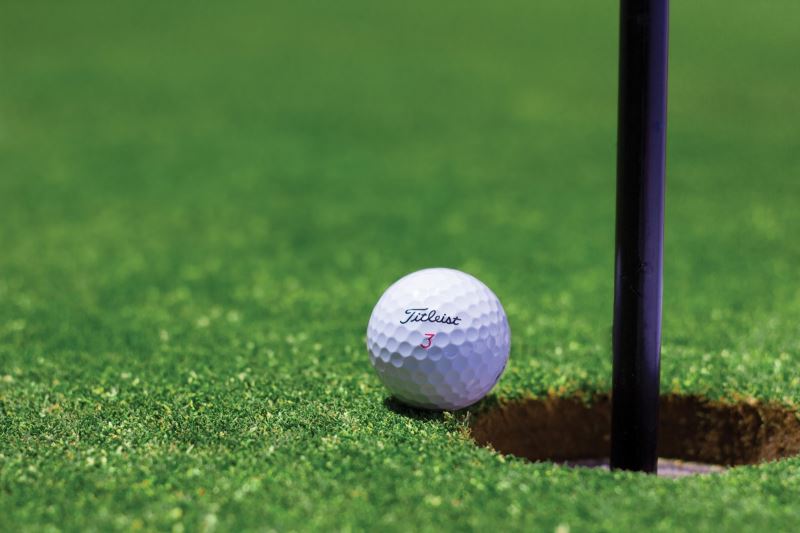Sports
On February 2, the groundhog told us that spring will arrive soon. But don’t fear – the sledding days are not yet over. If you are looking to maximize your snowmobiling adventures or to try the activity for the first time before the snow disappears, then this is for you.
Like any other activity, it is important to understand the risks and how to prevent injury. In this case I’m not talking about injuries from accidents, although that is still very important to take precautions to avoid. My focus is instead on the aches and pains you may experience throughout your body.
Snowmobiles have come a long way from the original 20 ton machine that was first designed for log hauling, with most modern machines weighing over 500 lbs and able to reach speeds of 110 mph (Heisler 2010). With prolonged time on the machine you are exposed to awkward positions for your upper body, long periods of sitting with a forward bent posture, and vibration stresses. Not to mention the heavy lifting, pulling, and pushing when you need to get out of a jam. Common aches and pains from riding are the low back, neck, shoulder and the occurrence of white-finger syndrome (Heisler 2010).
I’m not suggesting you quit your sport! There are certain factors that can be modified to prevent you from injury, and to keep you more comfortable.
A factor to the aches and strains is the ergonomics of a snowmobile. One of the most important parts to adjust is the steering bar (Rehn et al. 2005). Ideally it should be close enough to your body and have the grips oriented in a way so that your wrists aren’t bent, your shoulders aren’t hiked up and you do not have to reach so far forward. This will put you in a more comfortable posture for your upper limbs and your lower back, as well as lowering the grip force you need to use. Specific positions are to have your wrists neutral, elbows bent 60-70 degrees and if you have a seat back, for it to be tilted back 45 degrees (Heisler 2010). Grips should ideally be about 1.5” in diameter to lessen the grip strength required to steer (Heisler 2010). When looking at buying a snowmobile, also consider its seat suspension. Whole-body vibration, which will occur even on groomed trails, puts the discs in your back at risk for injury (Bovenzi and Hulshof 1999).
There are other factors to consider beyond just the ergonomics of your sled. Here are things you can do to prevent injuries:
Avoid sitting too long in poor posture: When you sit, you lose the normal curve in your low back. This is made worse by bending forward. The posture in combination with the machine’s vibration puts the discs at risk of injury. When possible, alter how you sit so that you back isn’t arched so much.
Wear appropriately warm mitts: Vibration of the upper limb, along with cold exposure, can contribute to the occurrence of “white-finger syndrome” which increases the chances of frostbite. It will also affect your ability to grip properly (Heisler 2010). To minimize this risk, stay warm!
Keep strong: Think of sledding as you would another sport – one that requires strength and endurance. Keep your body fit, and flexible, during the week to prepare you for the weekend adventures.
Listen to your body: If you’re getting fatigued, it’s time for a break. That is when you have a greater chance of adopting poor postures, or hurting yourself with the sudden jolts and turns.
And of course, listen to your body if you’re experiencing pain. Delayed onset of muscle soreness, DOMS, has been reported to last about 1-3 days after snowmobiling (Heisler 2010), but if it extends beyond that, or if you’re finding you’re getting weak (a loss of grip strength is commonly reported) – seek out care from a health professional.
Enjoy the rest of the sledding season, have fun, and stay injury-free!
Sports
IT Band Syndrome
Its the time of year when its great to get back outdoors, and when many of us become more physically active again. As our bodies adjust to the increased activity, sometimes there are aches and pains that come along with it. One such problem that commonly occurs in the hip or knee is Iliotibial (or IT) Band Syndrome.
The IT band is a connective tissue that runs from the muscles in the hip, down the outer thigh to connect into the outside of the knee. When you increase your activity levels, particularly running or hiking, then the hip and thigh muscles are required to work harder and as they recover they may have that tight post-exercise feeling. Because these muscles connect directly into the IT band, more tightness in them will increase the tension of the IT band itself. As the IT Band travels down the outer thigh, it runs over two bony prominences – one on the outside of the hip, and the other on the outside of the knee. An increase in tension of the IT band can therefore cause increased friction as it rubs over the bone, which leads to inflammation and pain in the outer hip and/or knee region.
There are some common features that may predispose someone to encountering this problem. These include muscle imbalance, sudden increase in training, running or hiking up and down hills, type of foot wear, and running/ walking gait pattern.
Once the causative factors have been identified with the help of your physiotherapist, IT band syndrome can usually be managed well. Physiotherapists have an effective way of releasing the tension in the IT Band by using acupuncture needles combined with some massage techniques. As well as reducing IT Band tension and reducing the inflammation in the irritated tissue, specific strengthening of the muscles around the hip and knee is required to take some of the stress off the IT band. This will ensure that as you continue to hike or run, there is less friction on the IT Band as it moves over the underlying bone, and less friction means less pain.
So if pain in your hip or knee is stopping you from getting out there this spring, it may be a fixable case of IT Band syndrome.
Sports
Running is a popular activity that can help maintain or improve your cardiovascular fitness and in some cases help you lose weight. There are many different reasons to run but often there is a goal set that may include 5Km, 10Km, half marathon, or full marathon.
When training for longer runs including 10km, half and full marathons it is important to remember that the training schedule should take place over long periods of time to allow your muscles and joints to accommodate for the increased strain that will be placed on them during the long run. As a physiotherapist, I treat many runners with all sorts of injuries. Some of the most common injuries include plantar fasciitis, achilles tendonitis, muscle strains, and Iliotibial band friction syndrome (IT band syndrome).
IT band syndrome is a repetitive stress injury that occurs when the iliotibial band glides over the lateral femoral condyle on the outside part of the knee. The iliotibial band is the thick band that runs from the outside of the hip down to the outside of the knee. It is a common injury for long distance runners (20-40 miles/week) but is not limited to only long distance runners. Running on various terrains can increase the risk of developing this condition. Up and down hills, graded slopes, and cambered roads have all been shown to increase the risk. This syndrome may also be found in other athletes or weekend warriors such as cyclists, weight lifters, and participants in jumping sports.
With IT band syndrome there is rarely a history of trauma. Patients will often complain of knee pain that may be difficult to localize and usually increases with repetitive motions like running. The symptoms usually get worse with changes in training surfaces, increasing mileage, or training on crowned roads.
Studies have found that long distance runners with IT band syndrome have weaker hip abductor and glut muscles on the involved leg compared to the uninvolved leg. The hip abductor muscles are located on the outside part of the hip and help prevent the leg from moving towards the centre of the body. It is also noted that fatigued runners are more prone to having their hip adduct (move towards the centre) and internally rotate (leg turns inwards) which causes more friction on the iliotibial band and therefore the symptoms get worse.
The management of IT band syndrome usually includes: 1) activity modification (usually decreasing mileage). 2) New running shoes. Shoes should be replaced about every 500km. 3) Heat or ice. 4) Stretching the IT band. 5) Strengthening the hip abductors and glut muscles.
If you are interested in pursuing long distance running you should: 1) follow a certified training schedule. 2) Make sure the shoes you are wearing are the right shoes for you. 3) Increase your mileage slowly to allow your body to accommodate for the increased strain. 4) Hit the gym – muscle weakness can cause problems down the road. 5) Go in for an assessment with a health care professional if you start to experience aches and pains that aren’t going away.
Sports
The sun is shining. Birds are singing. Blossoms are blooming… and the soccer balls are flying! Soccer is the most commonly played sport in the world enjoyed by all ages. In 2005, about 20% of children younger than 14 years of age participated in soccer, a number which is likely higher now.
Training in organized sports during the younger years has been shown to, improve general health, have psychological benefits, and enhance performance in physical activities. However, children and adolescents are at risk of injury with sports, and special considerations need to be kept with regards to their growing bodies. Studies have shown higher risk in younger age groups, particularly those under 15.
The leg joints and muscles are commonly hurt, with strains, sprains, and bone or cartilage damage. Injuries can occur due to a traumatic event, or overuse, in either a game or in practice. While some aches and pains are relatively minor, the sprain receiving the most attention in soccer is the ACL tear. The risk of this season-ender is high due to the nature of the sport with quick changes of directions, cutting manoeuvres, sudden stops with a foot planted on the ground, and collisions with other players.
The good news? Injuries can be prevented! Training programs exist specifically for soccer players and have been shown to reduce the risk of injuries, including the ACL tear. These programs are based on well designed studies, and can be carried out by an individual experienced with this kind of training: this could be, for example, a coach or a physiotherapist.
The programs decrease injury risk by:
Decreasing muscle fatigue
Improving stability of the trunk, pelvis and joints of the leg
Optimizing balance between muscle groups
Increasing balance
Improving body technique and body mechanics.
Special training programs for young soccer players often involve a cardiovascular warm-up, strength building, stretching, agility drills, and exercises with fast, powerful movements (plyometrics).
Note to any young athletes reading: remember all those dreaded drills of burpees, hopping over cones, and jumping on/off high steps? Try to smile through them, and think of how much you’re lowering your risk of being kept out of the game.
Having a history of previous injury increases the chances of getting hurt again. The high rate of re-injury suggests players often return to sport with incomplete healing or rehab. Factors to preventing recurrence of an injury include: completing a rehab program specific to the individual, gradual return to training and competing, use of bracing and taping if appropriate, and consulting a professional to ensure the young athlete is ready before returning to sport.
Another injury risk factor that can get overlooked in the young is the occurrence of a ‘burn out’, which can happen with over training. Some signs to watch for include:
Sleep changes
Persistent aches and pains
Decreased physical performance
Changes to mood and attention
Decreased academic performance
If you note these signs, consider if over-training is a factor. Consulting your coach or health professional is important for recognizing burn-out and preventing injury. An appropriate training program will be intense enough to obtain desirable goals, without resulting symptoms of overtraining.
Participating in organized sports has many benefits for children and adolescents. To prevent injuries to stay in the game: consider incorporating a special supervised training program, give time for injuries to heal, and be aware of signs of overtraining. As the temperatures soar into the double-digits, the clouds give us reprieve, and the spring sports recommence, I hope you and your young athletes stay injury-free… and have a ball!



